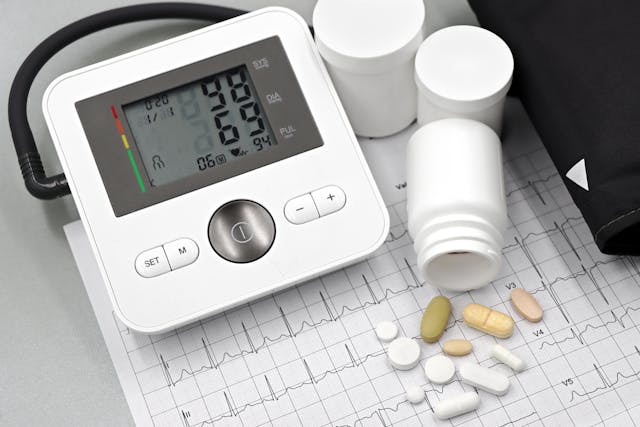CE approval for medical devices is a crucial regulatory requirement for manufacturers looking to market their products in the European Economic Area (EEA). It signifies that a medical device meets essential safety, performance, and quality standards outlined by European regulations. Understanding the CE marking process is essential for compliance and successful market entry. This guide provides a step-by-step approach to obtaining CE approval and ensuring adherence to regulatory requirements.
What is CE Approval for Medical Devices?
CE marking is a certification that indicates a medical device conforms to European Union (EU) safety, health, and environmental protection standards. It is required under the Medical Device Regulation (MDR 2017/745) and the In Vitro Diagnostic Regulation (IVDR 2017/746). The CE mark ensures that medical devices can be freely marketed and sold within the EEA. The approval process includes a thorough assessment of safety, efficacy, and performance to ensure patient well-being and compliance with industry standards.
Which Medical Devices Require CE Marking?
All medical devices intended for sale in the EU must undergo CE certification unless they fall under specific exemptions. Devices are categorized based on risk level:
- Class I: Low-risk devices such as bandages, non-invasive tools, and reusable surgical instruments.
- Class IIa: Medium-risk devices including hearing aids, infusion pumps, and dental materials.
- Class IIb: Higher-risk devices such as ventilators, diagnostic imaging systems, and anesthesia machines.
- Class III: High-risk devices including pacemakers, implantable defibrillators, and artificial heart valves.
Understanding classification is critical, as it determines the approval pathway and the level of regulatory scrutiny required.
Step-by-Step Process for Obtaining CE Approval
1. Determine Device Classification
Manufacturers must assess the classification of their medical device based on MDR guidelines. The classification dictates the level of documentation, testing, and assessment required.
2. Conduct a Conformity Assessment
The conformity assessment process ensures that the medical device complies with essential safety and performance requirements. Manufacturers must prepare a technical file that includes risk analysis, performance data, and safety information.
3. Work with a Notified Body (if required)
For higher-risk devices (Class IIa, IIb, and III), manufacturers must engage a Notified Body—a third-party organization accredited to conduct regulatory assessments. The Notified Body evaluates the device’s technical documentation and quality management system (QMS) compliance.
4. Conduct Clinical Evaluations and Performance Testing
Clinical evaluation is a mandatory step for medical devices, ensuring that they meet safety and performance criteria. This includes:
- Preclinical testing to assess material biocompatibility and mechanical performance.
- Clinical trials (for higher-risk devices) to evaluate efficacy and safety in real-world settings.
- Literature reviews to support claims regarding the device’s performance.
5. Implement a Quality Management System (QMS)
A robust QMS, typically compliant with ISO 13485, is necessary to ensure consistent manufacturing quality. The QMS outlines policies and procedures for design, production, post-market surveillance, and complaint handling.
6. Prepare the Technical Documentation and Submit the Application
Manufacturers must compile detailed technical documentation, including:
- Design and manufacturing specifications.
- Risk management reports.
- Labeling and user manuals.
- Clinical and performance data.
Once prepared, the documentation is submitted to the Notified Body (if required) for review and approval.
7. Declaration of Conformity and Affixing the CE Mark
Upon successful assessment, manufacturers issue a Declaration of Conformity (DoC), a legally binding statement affirming compliance with EU regulations. The CE mark is then affixed to the device, allowing it to be marketed within the EEA.
Common Challenges in the CE Approval Process and How to Overcome Them
Navigating the CE marking process can be complex, with several challenges that manufacturers may encounter:
1. Regulatory Updates and Compliance Changes
The transition from the Medical Device Directive (MDD) to the Medical Device Regulation (MDR) has introduced stricter compliance requirements. To address this challenge, manufacturers should stay updated on regulatory changes and work closely with compliance experts.
2. Notified Body Availability
Notified Bodies have limited capacity, often leading to long approval timelines. Manufacturers should plan early and engage with a Notified Body as soon as possible to avoid delays.
3. Clinical Evidence Requirements
The MDR places a stronger emphasis on clinical evaluation and post-market surveillance. To meet these requirements, manufacturers should conduct rigorous clinical studies and maintain detailed post-market data.
4. Risk Management and Documentation
Comprehensive risk management is critical for CE approval. Manufacturers should implement a proactive risk management approach, ensuring all potential hazards are identified, mitigated, and documented.
Benefits of CE Marking for Medical Device Manufacturers
Achieving CE approval offers numerous advantages, including:
1. Market Access in the European Union
CE marking is a mandatory requirement for selling medical devices within the EU, allowing access to a large and regulated market.
2. Global Recognition and Competitive Advantage
CE certification enhances credibility and facilitates entry into international markets, as many countries recognize the CE marking as a quality standard.
3. Increased Consumer Trust and Safety Assurance
Patients, healthcare providers, and regulatory authorities trust CE-marked devices due to their compliance with stringent safety and performance standards.
4. Compliance with International Safety and Quality Standards
The CE marking process aligns with global best practices, ensuring that devices meet high-quality benchmarks and regulatory expectations.
Bottom Line
CE approval for medical devices is a critical step for manufacturers aiming to enter the European market. The process involves stringent regulatory requirements, including conformity assessments, clinical evaluations, and quality management implementation. While challenges exist, proper planning, thorough documentation, and engagement with regulatory bodies can streamline the approval process. Manufacturers must prioritize compliance to ensure their medical devices meet safety, performance, and quality standards, ultimately contributing to better patient care and market success.

